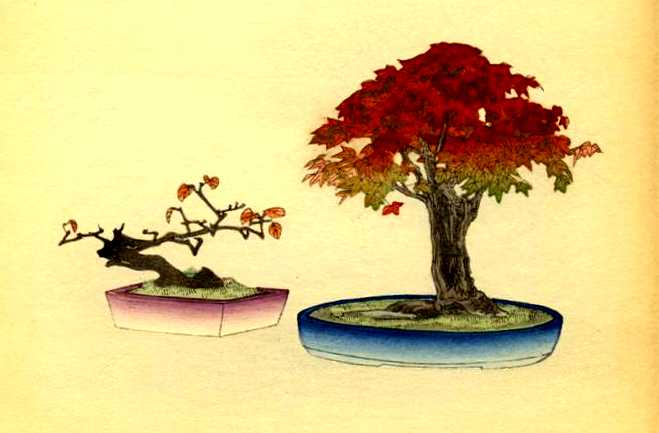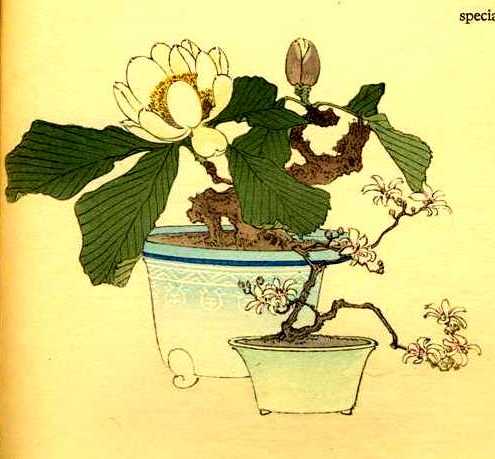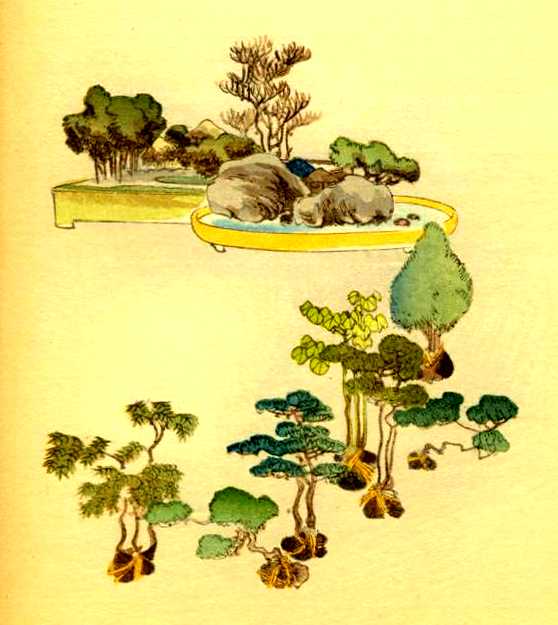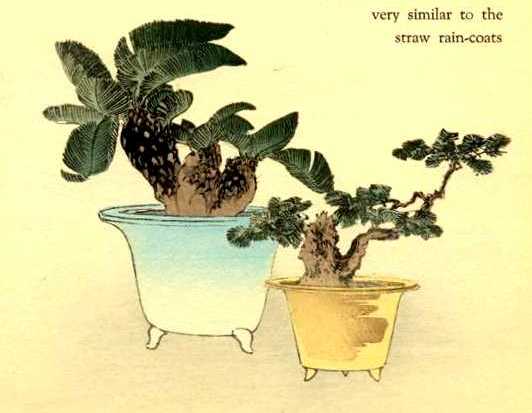|
The Favorite Flowers of Japan
(1901):
With the remembrance of the deep purplish-red, white and pink peonies of my grandmother's garden in mind, I started very unenthusiastically one morning in April for my first visit to a celebrated paeony garden in Tokyo. As we crossed the small front garden, I stopped to look at the dwarf trees, always fascinating to a new-comer, wondering why my friends pushed forward so eagerly. (pg. 17)

The process, which to the stranger seems so
mysterious, is really rather a simple one. The gardener prefers
to select his trees from the forest and, after severely trimming back
the branches and roots, he plants this skeleton in a very small
receptacle, the size and shape of which is dictated. The branches
are tied down and if a branch grows out of proportion it is judiciously
clipped so that this diminutive tree may resemble its brother of the
forest. The plant is left in the same earth as long as possible
and is only repotted when absolutely necessary. Just enough water
and nourishment are given to keep it barely alive and in this very
tenacity with which the tree fights for existence is seen reproduced
that tale of a long life of strife and struggle against adversities,
which makes those gnarled old mountain trees so dear to the Japanese.
(pp. 49-51)
Cycas revoluta
(left specimen, pg. 56)
1 |


